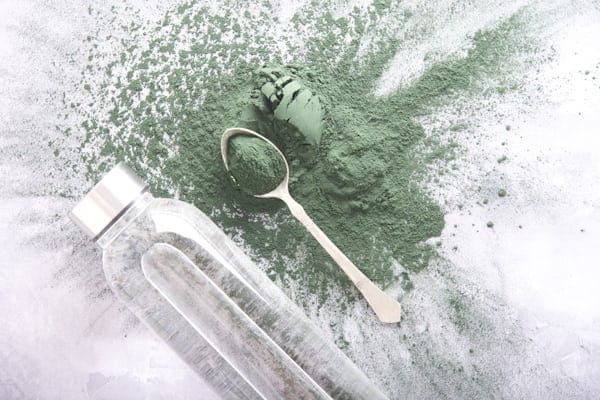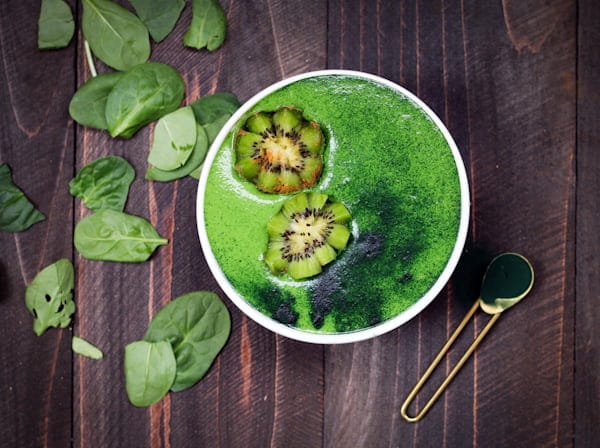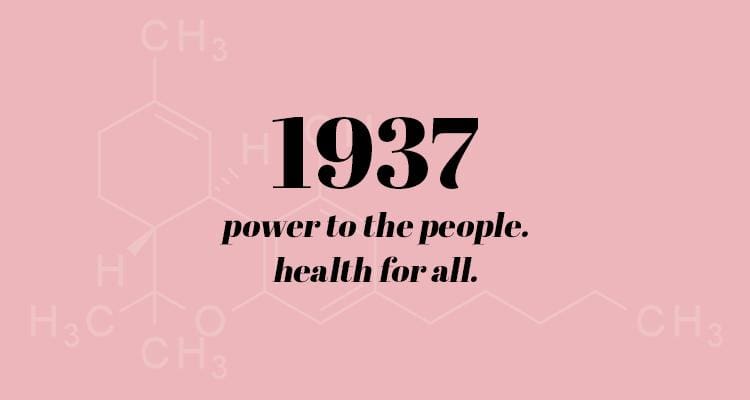Botanical Spotlight: Spirulina, Chlorella, and Wheatgrass

You’ve probably noticed a surge of wellness trends lately focusing on adaptogenic botanicals--and we couldn’t be happier! If you’re already a member of the 1937 Hemp Store family, you know that we’re pretty obsessed with all things plants. That’s because plants are mother nature’s medicine cabinet.
While we may focus on the hemp plant, we do want to give a shoutout to some other botanicals you should be doing your best to get a hold of. Today, we’re covering the ultimate detox trio--spirulina, chlorella, and wheatgrass.
Botanicals Are Mother Natures Medicine Cabinet
If you think of plants and flowers when you hear the word “botanicals,” you’re absolutely right! Botanicals, in this instance, refers to any herb, root, flower, mushroom, or mineral used for medicinal purposes. You can find them in skincare products, hair care products, and a wide variety of supplements.
Some of these botanicals are incredibly powerful and, for centuries, were used as medicine in different cultures. Today, people are rediscovering the effectiveness of botanicals and have begun to use them in much the same way that over-the-counter medicines are used.
For legal purposes, however, botanical medicines can only be classified as “dietary supplements.” Regardless of that classification, some botanicals are well-known for their ability to relieve inflammation, ease digestive issues, balance hormones, promote better sleep, boost moods, and more. It’s all about the connection between mind and body medicine.
Honestly, we could talk about the wonderful world of botanicals for an entire blog. In fact, we already did! If you want more details, check out our blog Botanicals for Health and Wellness.
For our first Botanical Spotlight, we wanted to shed some light on the ultimate detox trio--spirulina, chlorella, and wheatgrass.

Why Spirulina?
If you have a hard time getting in your daily dose of green veggies, a supplement with spirulina may be just the thing. Believe it or now, spirulina is actually an algae that grows in both salt and freshwater environments. It’s also very nutritionally dense, making it one of the most beneficial supplements you can take.
In fact, one tablespoon contains:
- 11% of the RDA of Vitamin B1
- 15% of the RDA of Vitamin B2
- 4% of the RDA of Vitamine B3
- 4 grams of Protein
- 21% of the RDA of Copper
- 11% of the RDA of Iron
- Magnesium, Potassium, Manganese, and more!
-
Omega 6 and Omega 3 Fatty Acids
It also contains phycocyanin. Not only is this compound what gives spirulina its blue-green color, but it also combats free radicals making it a powerful antioxidant and anti-inflammatory.
On top of that, there’s even research indicating that spirulina may help improve cholesterol levels in two ways. It may lower bad cholesterol while raising good cholesterol, and it may prevent bad cholesterol from oxidating. When LDL cholesterol oxidizes, it increases the likelihood of developing heart disease. Luckily, the antioxidants in spirulina may help prevent that from happening.
Honestly, this is just a small portion of what spirulina is capable of. See why we’re so obsessed?
Why Chlorella?
Chlorella is another algae, but that doesn’t mean it’s exactly the same. This fresh-water, single-celled algae has almost all the same nutrients that spirulina does plus a few extra perks.
- Chlorella is made up of 50-60% protein containing all nine essential amino acids.
- Unlike spirulina, chlorella may also contain Vitamin B12.
- Depending on the strength of the supplement, chlorella may have between 6 and 40% of your daily iron requirements.
- Excellent source of Vitamin C.
- It contains magnesium, copper, zinc, potassium, folic acid, calcium, and other B vitamins.
- A 3 gram serving of chlorella contains 100mg of Omega-3 fatty acids.
One of the biggest perks of chlorella is its ability to bind with heavy metals. There are some metals that are essential but only in tiny amounts. Obviously, that includes iron and copper, but there are a few that you definitely don’t want to stick around. For example, cadmium and lead can be incredibly dangerous in large amounts.
Heavy metal toxicity is pretty rare. However, pollution or even certain jobs can put someone at a higher risk of absorbing these compounds. Luckily, chlorella has been shown to decrease the amount of heavy metal toxicity.
Like spirulina, chlorella has also been shown to have some cholesterol benefits. In several different studies, taking as little as 5-10 grams of chlorella was shown to lower bad cholesterol and triglycerides. This is thought to be due, in part, from the niacin, fiber, carotenoids, and antioxidants in chlorella.
Again, this is just a glimpse of what chlorella can do. It’s also been known to boost endurance, improve digestion, improve blood sugar, and more! If you weren’t a fan of algae before, you should definitely consider giving it a chance.

Why Wheatgrass?
Wheatgrass gets a bad rap. Sadly, it’s because health advocates have been promoting it for years in the form of highly concentrated liquid drinks. While that’s definitely one way to get your daily dose of wheatgrass, it’s not the tastiest. That’s why a supplement with wheatgrass is often the way to go; and after you hear about its many benefits, you’ll think so too!
Wheatgrass is sprouted from, you guessed it, the wheat plant. Just like both spirulina and chlorella, it’s incredibly nutrient-dense.
- High in Vitamins A, C, and E
- It contains Iron, Magnesium, Calcium, and more
- It contains 17 amino acids, eight of which are essential.
- Has a high amount of chlorophyll (SUPER good for you).
- High in antioxidants.
On top of that, wheatgrass may also help lower cholesterol. Some cholesterol is important for things like bile and hormone production. Too much, however, can increase your risk of heart disease. Wheatgrass, however, seems to have similar effects to a prescription drug called atorvastatin, which is prescribed to treat high cholesterol. More research is needed, but that sounds like a great start for us!
Many people faithfully use wheatgrass for its anti-inflammatory properties. Acute inflammation (muscles sore from working out, sore throat from allergies, etc.) is normal and a necessary reaction from your immune system. Chronic inflammation, however, can be painful and have long-lasting negative effects.
The anti-inflammatory properties of wheatgrass are due, in part, to its high chlorophyll content. Again, more research is needed, but early results indicate that wheatgrass may even help treat inflammatory bowel disease, ulcerative colitis.

Get Your Green Botanicals in Today!
Together, these botanicals provide powerful detoxification and immune-boosting properties. Plus, add hemp into the mix and you have one powerful supplement designed to help rid your body of toxins, reduce inflammation, boost energy, and more. Be sure to check out The Brothers Apothecary | Super Greens Hemp + Spirulina & Wheatgrass Capsules to try out these botanicals today!
As always, in the comments below feel free to let us know what your experience with these botanicals has been like! And don’t forget to follow us on social media for all the latest updates.

Hannah Walker is a mostly-retired University English instructor who spends her time freelance copywriting. When not doing that, she’s writing articles related to CBD, skincare, and/or media. With an MA in English-Creative Writing she’s probably working on a creative piece at this very moment. See more about Hannah’s work on her website or on Instagram.

